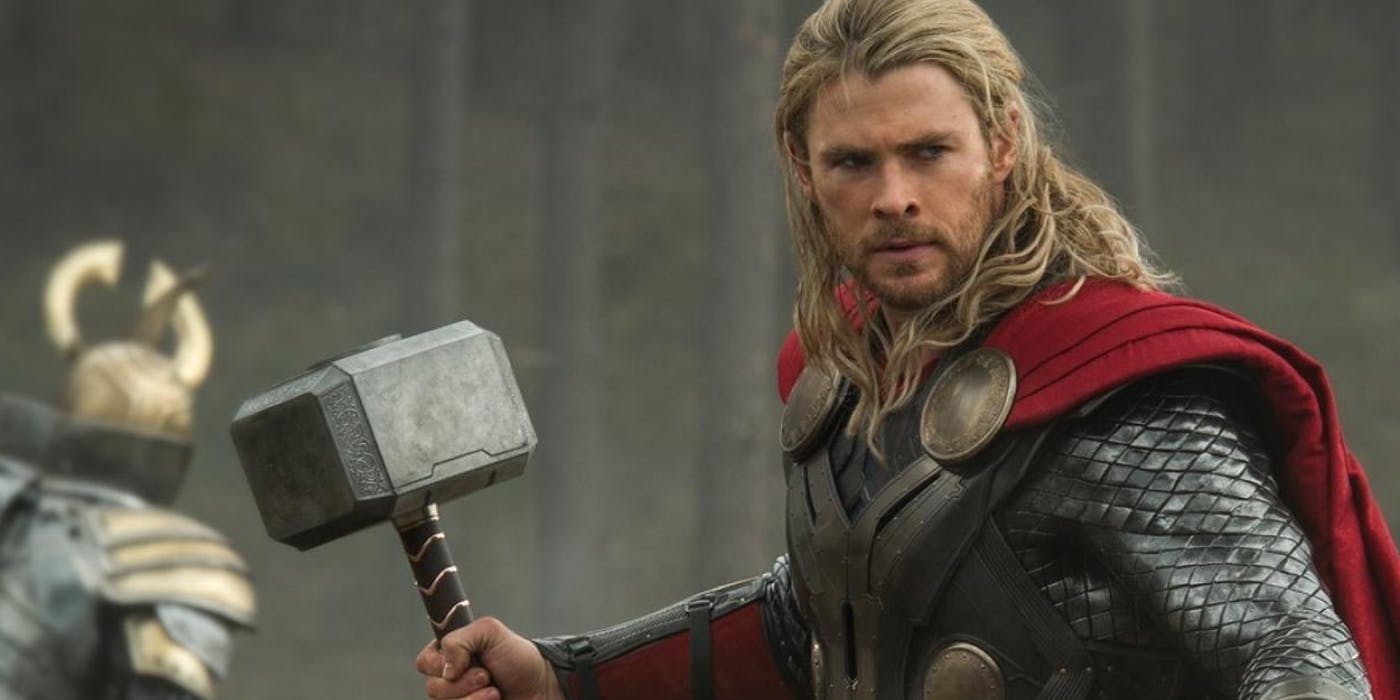The Reason Only Thor Can Pick up His Hammer Is … Science

The comics are pretty clear on the ground rules: “Whosoever holds this hammer, if he [OR SHE] be worthy, shall possess the power of THOR.” But how does this work?
Writer Mark Waid went into the science behind Thor’s hammer in Avengers #679, and that science appears to be theoretical physics—with a little help from super-advanced blacksmithing dwarves (and Odin’s enchantment doesn’t hurt).
Comicbook.com has the text from the back matter of Avengers #679, with Waid’s explanation:
Okay. The science of Thor’s magic hammer, taken in part from all the research I did for that Thor/Hulk crossover I did a few years back with Walt Simonson: Uru metal was forged in fiery pits by dwarven blacksmiths. Based upon its observed properties–that it is nigh-indestructible, cannot be lifted by anyone except if they be as worthy as Thor and always returns to his hand–there can be only one explanation: “Uru metal” must actually be an exotic form of matter that can be induced to emit gravitons. Gravitons are particles (theoretically predicted but, unlike the Higgs boson, still not experimentally confirmed) that mediate the force of gravity, just like photons transmit the force of electromagnetism.
Are you following? Good. Because while the theoretical physics here sounds legit, it would still appear to need a kick from an advanced civilization and an all-seeing Allfather in order to work:
While we are unable to forge Uru metal on Earth, the dwarven blacksmiths, being as advanced compared to us as we are to our early ancestors, could craft a hammer whose properties seem like magic to us. Being able to change the rate of emission and absorption of gravitons is equivalent to being able to change an object’s mass and even shape it. If a person whom the hammer has determined to be unworthy attempts to lift the hammer, thanks to Odin’s enchantment, the Uru metal will dramatically increase the rate of graviton emission. This will result in an exponential increase in the gravitational attraction between the Earth and the hammer, such that it cannot be budged. When Thor grips Mjolnir’s handle, the ‘identity recognition enchantment,’ if you will, causes the graviton emission to cease, and the hammer resumes its normal weight.
So I’m down with gravitons making the hammer impossible for anyone to pick up save Thor (or anyone worthy)—it’s fun to consider the science behind the fantastic. “Any sufficiently advanced technology is indistinguishable from magic,” Arthur C. Clarke might interject here.
While all of this does seem to weigh rather heavily on Odin’s special enchantment ensuring that Mjölnir can recognize the worthy upon contact, have no fear—science may provide an answer for that as well.
Waid’s Thor-based theoretical physics seems to have come by way of Professor Jim Kakalios, a professor of Physics and Astronomy at the University of Minnesota who has written extensively about the Avengers’ material science. As Bleeding Cool points out, Kakalios shared his explanation of Mjolnir’s properties with Waid back when the writer was working on The Indestructible Hulk.
Kakalios went deep into the science behind Thor’s hammer a few years ago for Wired, in an essay more than worth your time if you like to think about how seemingly impossible things can be made plausible. Kakalios theorizes that Odin’s original enchantment could be explained as a sort of nanotechnology developed by the highly advanced Asgardians:
In the Avengers: Age of Ultron clip, Tony Stark speculates that there is a biosensor in the hammer’s shaft that recognizes when Thor has grasped Mjolnir. He is correct, in a sense—though it is not Thor’s fingerprints that the hammer is reading. Most likely it is taking some complex biological and psychological profile that calculates the “worthiness” of whoever is trying to lift the hammer. This is consistent with the scene in the clip where Steve Rogers (Captain America) is able to move the hammer (albeit slightly), while Tony Stark and Jim Rhodes, using thruster-assisted Iron Man and Iron Patriot gloves, are unable to budge Mjolnir at all.
And that’s where Kakalios’ gravitons theory comes into play.
On Earth, these fundamental particles have not been experimentally confirmed to exist, but as stipulated, the Asgardians are ahead of us scientifically. Gravitons are conjectured to transmit the gravitational force, and if an object emits additional gravitons, it is equivalent to increasing its mass. Thus, when an “unworthy” person applies an upward force, the uru metal increases the hammer’s weight to exactly cancel this lift, and the hammer remains unmoved. When Tony and Rhodey simultaneously exert a larger upward force, the emission rate of gravitons increases, to again neutralize their efforts. The greater weight will not damage the tabletop, as only enough gravitons are emitted to balance out all upward forces, to keep the hammer stationary. Once the lifting force is stopped, the excess graviton emission also ceases.
I’m definitely not going to look at Mjölnir in the movies the same way again—and since the hammer was destroyed in Thor: Ragnarok and Thor appears to be on the hunt for a new weapon in Infinity War, I’m now looking forward to hearing about the scientific properties behind his new, seemingly “enchanted” axe.
But I have some lingering questions: how was Hela able to catch and crush Mjölnir? Was it because she once wielded it? If so, how and why was she determined to be worthy then? And if magic is really science, does this make Loki some kind of Einstein?
(via Comicbook,com, images: Marvel)
Want more stories like this? Become a subscriber and support the site!
—The Mary Sue has a strict comment policy that forbids, but is not limited to, personal insults toward anyone, hate speech, and trolling.—
Have a tip we should know? tips@themarysue.com